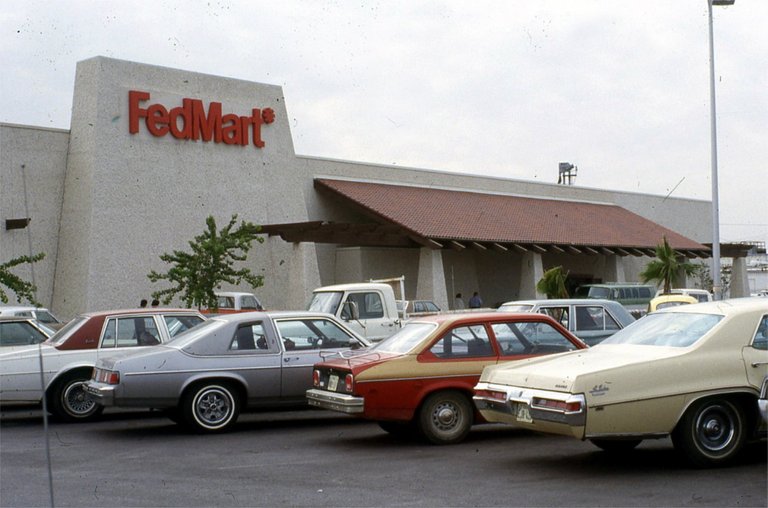The story of FedMart provides interesting insights into the modern business landscape.
The story starts when a man name Sol Price inherited an empty warehouse in the 1950s. He had to decide what to do.
Price visited a store called Fedco. Fedco was a "buyers club" started by a collective of postal employees who didn't want to pay retail. Because it was a buyers club, Fedco didn't have to pay taxes.
Price started FedMart as a membership warehouse that accepted only government employees. My guess is that he got tax advantages for this structure.
Personally, I think that FedMart and Fedco created an extremely negative structure. It has government employees withdrawing their spending from the community at large to a facility that gets special tax credits. The people who regulate business are withdrawn from the businesses the regulate.
Sol Price was extremely active in the Democratic Party. He donated a substantial amount of money from FedMart to progressive causes. He was so influential that Governor Jerry Brown appointed Price to the "Commission on State Government Organization and Economy."
Some saw the rise of FedMart as a one of the first salvos of the ruling elite against Main Street. The following quote appeared in the 1982 article called Mean Business by Bod Dorn in the San Diego Reader in 1982.
says the Democratic Party activist. “It [FedMart and big box stores] meant a tremendous transfer of power from the downtown merchants, that downtown was going to crumble. It took traffic patterns away from downtown; it started the shopping center idea. And it meant a transfer of political power.”
Dorn did not name "the activist." I remember progressive professors waxing philosophic about the progressive nature of FedMart.
When FedMart lost its tax advantages, it opened its doors to the public at large, but it kept its progressive political bent.
An Aside About Distribution Channels
The Main Street store of yesteryear bought product from a myriad of different channels. Stores often bought direct from manufacturers.
In the modern world, a store is usually nothing more than an end point of a distribution channel.
Sol Price had a network of friends who created a centralized distribution channel for his stores. Chief among these was Mandell Weiss who will play a role in my next post.
This structure is important to understand in what happened next.
Sol Price had an IPO in 1969. The IPO gave price money for expansion, but it meant losing political control of the stores.
The ownership of FedMart was distributed. The supply chain was centralized.
In 1975, Price cajoled a billionaire from Germany named Hugo Mann to buy 800,000 shares of FedMart at $25. This was a premium over the market valuation of $21 per share.
Things seemed to run smoothly at first, but Hugo Mann and Price quickly had a falling out and Mann fired Price.
Did I mention that, in the modern world, a store is the end point of a distribution channel?
Well, Price retaliated by having his son set up a competitor to FedMart called "Price Club." A compatriot of Price set up a store in Seattle called "Costco."
The distribution channel was loyal to Price and favored Price Club.
Hugo Mann was now holding a collection of large boxes.
Mann sold the boxes to Target and closed the FedMart chain. Price Club and Costco merged to create an entity called PriceCostco.
Things seemed perfect. But the Price family liked control. They made a deal with Costco to divide the world. PriceCostco became simply Costco which owned the United States. Price family set up a chain called "PriceSmart" which owned South and Central America.
Small is Beautiful
I confess, I tend to favor the small businesses found on Main Street to large entities that seek to dominate the market.
My personal observation is that Main Street merchants tend to be independent thinkers with a penchant for civic action. Small business owners are in both parties. They tend to be civic minded and nonpartisan.
Large progressive firms tend to favor economic and political consolidation. There are elements of both parties that favor economic consolidation.
Credits
The picture by Costaricky shows the San Antonio FedMart in it 1979. It came from the WikiCommons which uses the Creative Commons License.
Posted Using LeoFinance Beta
